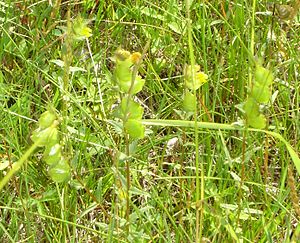[amazon_link asins=’B00DL0I4NQ’ template=’ProductCarousel’ store=’finmeacur-20′ marketplace=’US’ link_id=’5416c112-8bb8-11e7-9646-7d352cca1ecc’]
[amazon_link asins=’B0182XEG9C,B003XEB91Y,B01N15EUJ6,B004HG5Z4O,B00NG5PITE,B01B37AH8S,B00RDDMDYI,0143038559,B01NAV56MR’ template=’ProductCarousel’ store=’finmeacur-20′ marketplace=’US’ link_id=’7a68eed6-8bb8-11e7-bc36-6f54e29dfec4′]
Botanical Name :Ajuga chamaepitys
Family: Lamiaceae
Genus:Ajuga
Species: A. chamaepitys
Kingdom: Plantae
Order: Lamiales
Common Names: Ground Pine, Yellow bugle
Habitat: Ajuga chamaepitys is native to CentraL and souther Europe, including Britain, to N. Africa and E. Asia. It grows in very local in sandy and chalky arable fields and in open habitats in chalky grassland in southeastern England.
Description: A. chamaepitys is a small herbaceous perennial that reaches 10–40 cm in height. The leaves have an opposite arrangement. It’s flowering season is generally in late spring. Ground pine is a plant whose richness has been severely reduced by changes to downland farming. At first sight, A. chamaepitys looks like a tiny pine tree with a reddish purple four-cornered hairy stem. The leaves can get up to 4 cm long, and the leaves are divided into three linear lobes which, when crushed, has a smell similar to pine needles. Ground pine sheds its shiny black seeds close to the parent plant and the seeds can remain alive in the soil for up to 50 years. click to see…………..(01)………...(1).……..(2)...
Both in foliage and blossom it is very unlike its near relative, the Common Bugle, forming a bushy, herbaceous plant, 3 to 6 inches high, the four-cornered stem, hairy and viscid, generally purplish red, being much branched and densely leafy. Except the lowermost leaves, which are lanceshaped and almost undivided, each leaf is divided almost to its base into three very long, narrow segments, and the leaves being so closely packed together, the general appearance is not altogether unlike the long, needle-like foliage of the pine, hence the plant has received a second name- Ground Pine. The flowers are placed singly in the axils of leaf-like bracts and have bright yellow corollas, the lower lip spotted with red. They are in bloom during May and June. The whole plant is very hairy, with stiff hairs, which consist of a few long joints. It has a highly aromatic and turpentiny odour and taste.
Cultivation:
Thrives in a poor dry soil in full sun. Prefers a humus-rich moisture-retentive soil. Plants are usually annual, but are sometimes short-lived perennials. The whole plant smells of pine trees when crushed.
Propagation:
Seed – sow spring in situ. Germination can be erratic
Medicinal Uses: A. chamaepitys has stimulant, diuretic and emmenagogue action and is considered by herbalists to form a good remedy for gout and rheumatism and also to be useful in female disorders. Ground pine is a plant well known to Tudor herbalists who exploited the resins contained within the leaves. The herb was formerly regarded almost as a specific in gouty and rheumatic affections. The plant leaves were dried and reduced to powder. It formed an ingredient of the once famous gout remedy, Portland Powder. It was composed of the leaves of A. Chamaepitys, which has a slightly turpentine-like smell and a rough taste, with properties described as being similar to diluted alcohol.
Disclaimer:
The information presented herein is intended for educational purposes only. Individual results may vary, and before using any supplements, it is always advisable to consult with your own health care provider
Resources: http://en.wikipedia.org/wiki/Ajuga_chamaepitys http://www.botanical.com/botanical/mgmh/b/bugley83.html
http://www.pfaf.org/user/Plant.aspx?LatinName=Ajuga+chamaepitys












![Reblog this post [with Zemanta]](https://i0.wp.com/img.zemanta.com/reblog_e.png?w=580)















